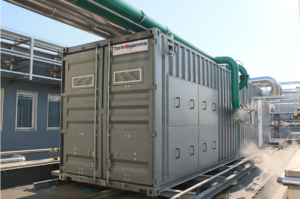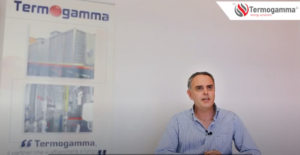Incentives for energy efficiency
The white certificates are a mechanism of state promotion that came into force in 2005 and represent a complex of incentives for energy efficiency in sectors ranging from industrial to civil.
In practice, white certificates, also called energy efficiency certificates (TEE), are negotiable securities that attest to the achievement of energy savings following an intervention or project to increase energy efficiency.
The economic value of the securities is defined in the trading sessions on the market with consequent variation depending on its performance.
They are subsequently monetized by the receiving entity that receives a sum of money depending on the number of securities it holds. A certificate is equivalent to the saving of one tonne of oil equivalent (TEP) that the GSE recognizes.
The TEP represents the amount of energy released from the combustion of a ton of crude oil and is worth about 42 GJ.
Thanks to this indication of the GSE, the certificates are subsequently issued by the Energy Market Manager (GME) on special accounts. White certificates can be exchanged and valued on the market platform managed by GME or through bilateral trading.
For this purpose, all the entities admitted to the mechanism are included in the Electronic Register of Energy Efficiency Certificates of GME. The subjects that can participate in this system are: the obliged subjects and the volunteer subjects.
The obligated parties are those who distribute electricity and natural gas to more than 50,000 final customers: these must fulfill the mandatory quota through two systems. The first provides for the purchase of securities from other parties within the mechanism and the second provides for the direct implementation of energy efficiency projects.
Under the category of voluntary subjects, fall all other subjects such as energy services companies (ESCO), companies that have appointed an expert in energy management (EGE) or companies with ISO 50001 certified management systems that decide to complete measures to reduce energy consumption in final uses.
Examples of types of interventions that make a subject compliant:
- Install a new efficient industrial furnace or replace an old one
- Install a new heat recovery system
- Install a new boiler or replace an old one
In any case, energy efficiency projects that are eligible for the TEE mechanism are projects that have not yet been carried out that can generate energy savings.
However, energy efficiency projects that are carried out solely to adapt to regulatory constraints or administrative requirements cannot be admitted to the mechanism.
LThe request for access to incentives can be made in two ways depending on the characteristics of the project:
- progetti a consuntivo (PC): prevedono una misura puntuale delle grandezze caratteristiche sia nella final results (PC) projects: provide for a precise measurement of the characteristic quantities in both the ex-ante and post-intervention configuration
- Standardised designs (PS): provide – upon the occurrence of specific conditions of repeatability and lack of cost-effectiveness – the possibility of measuring the characteristic quantities of an appropriate representative sample of the project operating parameters*
It is not possible to submit applications for certification of savings and therefore receive energy efficiency certificates in the absence of a project approved by the GSE.
The white certificates may not be cumulated with other incentives intended for the same projects at the expense of electricity and gas tariffs.
In compliance with the respective operating rules and within the limits provided for and permitted by European legislation, white certificates can instead be combined with funding provided at local, regional and Community levels (e.g. the ERDF OPs, granted by the Regions) and with access to *:
- guarantee funds and revolving funds;
- interest subsidies;
- tax-free business income relating to the purchase of machinery and equipment. In this case the number of securities to be credited is reduced by 50%. *
What, then, are the procedures to be followed?
- Measuring the ex-ante consumption
- Submit the project to the GSE
- Carrying out a project falling under the category of energy efficiency
- Measure post-installation consumption and determine savings
- Request periodic certification of savings by the GSE
- After the GSE certifies the savings, authorizes the GME to issue energy efficiency certificates.
With regard to cogeneration and trigeneration, the issuance of white certificates follows emission mechanisms that are more favourable than the definition of prices and refer to different criteria. We have explained what they are and how to access the TEE of high-efficiency cogeneration (CAR) in this article.
* source https://www.gse.it


